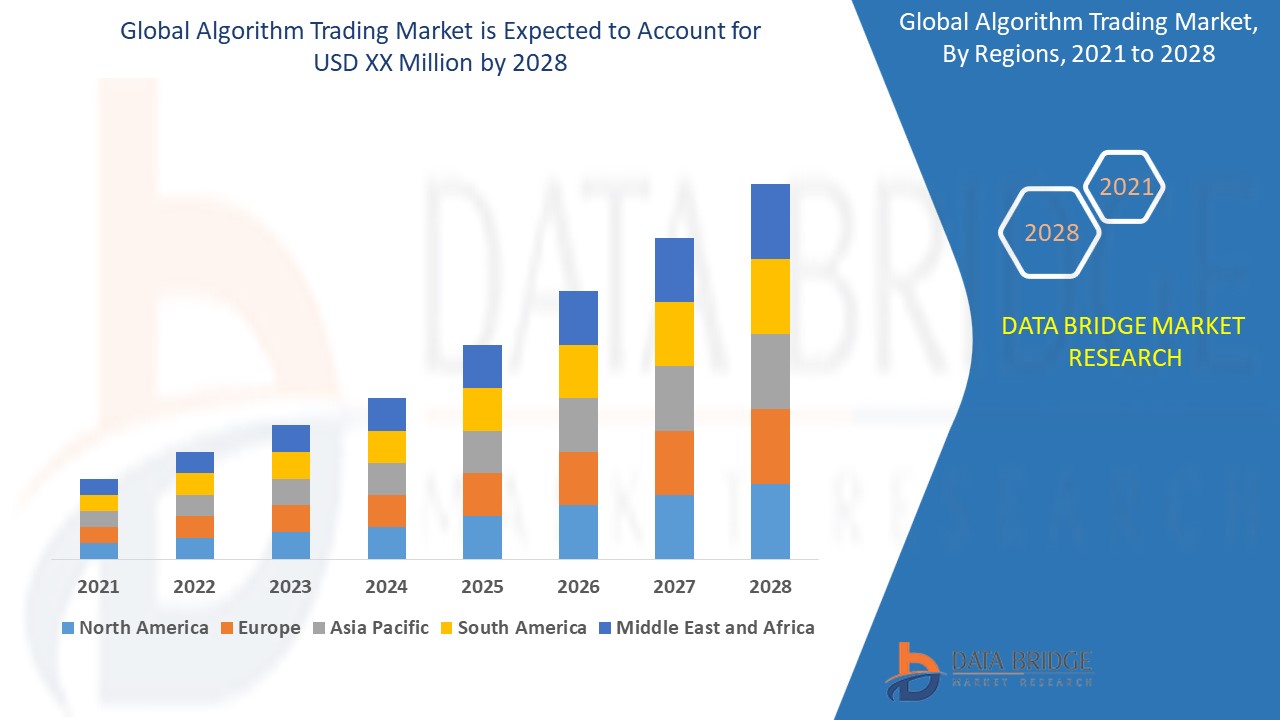Algorithm Trading Market: Transforming Financial Strategies with Technology
Algorithm Trading Market: Transforming Financial Strategies with Technology
Blog Article
 Introduction
Introduction
The Algorithm Trading Market is reshaping the financial world by enabling faster, more accurate, and efficient trading operations. Algorithm trading, also known as automated trading or algo-trading, utilizes computer algorithms to execute trades based on predefined criteria, eliminating emotional bias and enhancing precision. With advancements in technology, increasing adoption of AI and machine learning, and the growing need for high-frequency trading (HFT), the Algorithm Trading Market is at the forefront of financial innovation.
The Evolution of the Algorithm Trading Market
The concept of algorithm trading dates back to the late 20th century, when financial institutions began incorporating early computer models for trade execution. Initially focused on basic arithmetic calculations, algorithm trading gradually evolved with the advent of artificial intelligence, real-time data analytics, and machine learning.
Today, algorithms not only execute trades but also predict market movements, detect anomalies, and optimize trading strategies. The integration of big data and cloud computing has further accelerated this evolution, offering traders unparalleled access to insights and reducing latency in trade execution.
Moreover, regulatory frameworks and the democratization of trading tools have contributed to the widespread adoption of algorithm trading across retail and institutional markets.
Current Market Trends
Several key trends are driving the growth of the Algorithm Trading Market:
- Adoption of AI and Machine Learning: Advanced algorithms powered by AI can analyze vast datasets, identify patterns, and make decisions with minimal human intervention.
- Rise in High-Frequency Trading (HFT): Algorithm trading dominates the HFT sector, where milliseconds can determine profitability.
- Cloud-Based Solutions: Cloud computing enhances scalability, storage, and real-time processing capabilities for algorithm trading platforms.
- Customization of Trading Strategies: Traders now use algorithms tailored to their specific goals, such as risk mitigation or maximizing returns.
- Global Expansion: The adoption of algorithm trading is increasing in emerging markets, driven by improved connectivity and regulatory developments.
Challenges Facing the Market
While the Algorithm Trading Market offers immense potential, it also faces significant challenges:
- Regulatory Scrutiny: High-frequency trading practices have drawn criticism for their potential to disrupt market stability, prompting tighter regulations.
- Data Security Concerns: With reliance on technology, algorithm trading platforms are vulnerable to cyber-attacks and data breaches.
- Technology Costs: The development and maintenance of advanced algorithms require substantial investment, limiting access for smaller traders.
- Market Volatility: In highly volatile markets, even the most advanced algorithms can face difficulties in predicting movements accurately.
- Ethical Considerations: Concerns around fairness and transparency have emerged, questioning whether algorithm trading benefits all participants equally.
Market Scope
The Algorithm Trading Market spans a wide range of applications and services, including:
- High-Frequency Trading (HFT): Extremely rapid trade execution to capitalize on minute price fluctuations.
- Arbitrage: Algorithms identifying price differences across markets to enable profitable trades.
- Portfolio Management: Automated rebalancing and optimization of investment portfolios.
- Risk Management: Detecting anomalies and minimizing exposure to unfavorable market conditions.
- Sentiment Analysis: Using algorithms to analyze news, social media, and other data sources to predict market trends.
This broad scope ensures the market’s relevance across diverse financial strategies, from short-term trading to long-term investment planning.
Market Size and Factors Driving Growth
The Algorithm Trading Market has witnessed exponential growth in recent years, with projections indicating continued expansion. Key factors driving this growth include:
- Technological Advancements: The rise of AI, machine learning, and blockchain technologies is enhancing algorithm efficiency and reliability.
- Demand for Speed and Accuracy: Modern traders prioritize instant and accurate trade execution, making algorithm trading indispensable.
- Global Financial Integration: Increasing connectivity among global markets facilitates cross-border algorithm trading.
- Emergence of Fintech: Fintech companies are driving innovation and accessibility in algorithm trading tools for retail investors.
- Institutional Adoption: Large financial institutions are investing heavily in algorithm-driven trading systems to remain competitive.
Source : https://www.databridgemarketresearch.com/reports/global-algorithm-trading-market
Conclusion
The Algorithm Trading Market represents a transformative force in modern finance, combining technology with strategic acumen to optimize trading operations. As adoption continues to rise across institutional and retail sectors, the market is set to witness substantial growth and innovation.
While challenges such as regulatory scrutiny and market volatility persist, advancements in technology and increased focus on transparency are addressing these concerns. With its ability to enhance speed, precision, and efficiency, algorithm trading is becoming an integral part of global financial strategies.
In the years ahead, the Algorithm Trading Market is poised to redefine how financial markets operate, empowering traders with tools to navigate complexities and achieve their objectives. By fostering innovation and collaboration, industry players have the opportunity to shape a more efficient, transparent, and inclusive future for financial trading.
Other Trending Reports :
Global Carbon Footprint Management Market – Industry Trends and Forecast to 2028
https://www.databridgemarketresearch.com/reports/global-carbon-footprint-management-market
Global Flaxseed Market – Industry Trends and Forecast to 2028
https://www.databridgemarketresearch.com/reports/global-flaxseed-market
Global Tumor Immunotherapy Market – Industry Trends and Forecast to 2028
https://www.databridgemarketresearch.com/reports/global-tumor-immunotherapy-market
Global Gasoline Direct Injection Market – Industry Trends and Forecast to 2028
https://www.databridgemarketresearch.com/reports/global-gasoline-direct-injection-market
Global Surgical Tumor Ablation Market – Industry Trends and Forecast to 2028
https://www.databridgemarketresearch.com/reports/global-surgical-tumor-ablation-market
Global Customer Communication Management Software Market – Industry Trends and Forecast to 2028
https://www.databridgemarketresearch.com/reports/global-customer-communication-management-software-market
Global Aircraft Tire Market - Industry Trends and Forecast to 2028
https://www.databridgemarketresearch.com/reports/global-aircraft-tire-market
Global Outdoor Furniture Market – Industry Trends and Forecast to 2028
https://www.databridgemarketresearch.com/reports/global-outdoor-furniture-market
Global Duloxetine Market - Industry Trends and Forecast to 2028
https://www.databridgemarketresearch.com/reports/global-duloxetine-market
Global Automotive Braking Systems Market – Industry Trends and Forecast to 2028
https://www.databridgemarketresearch.com/reports/global-automotive-braking-systems-market Report this page